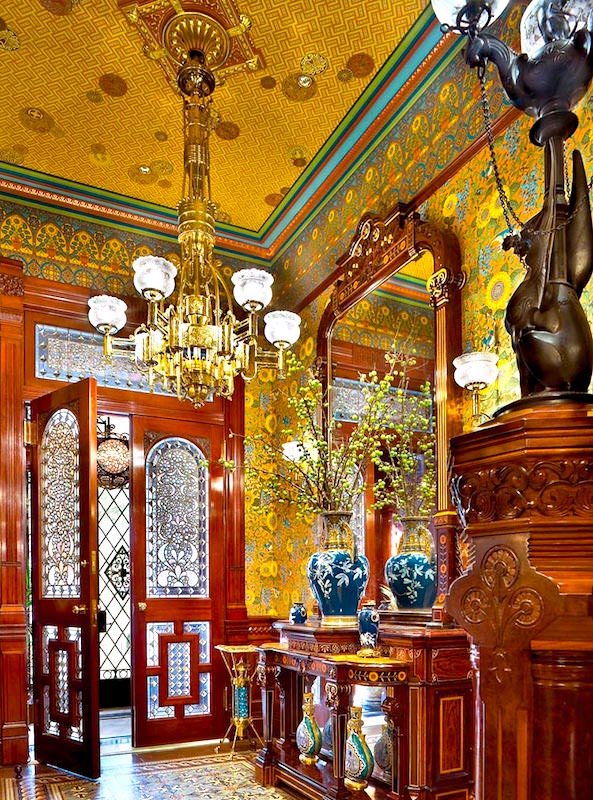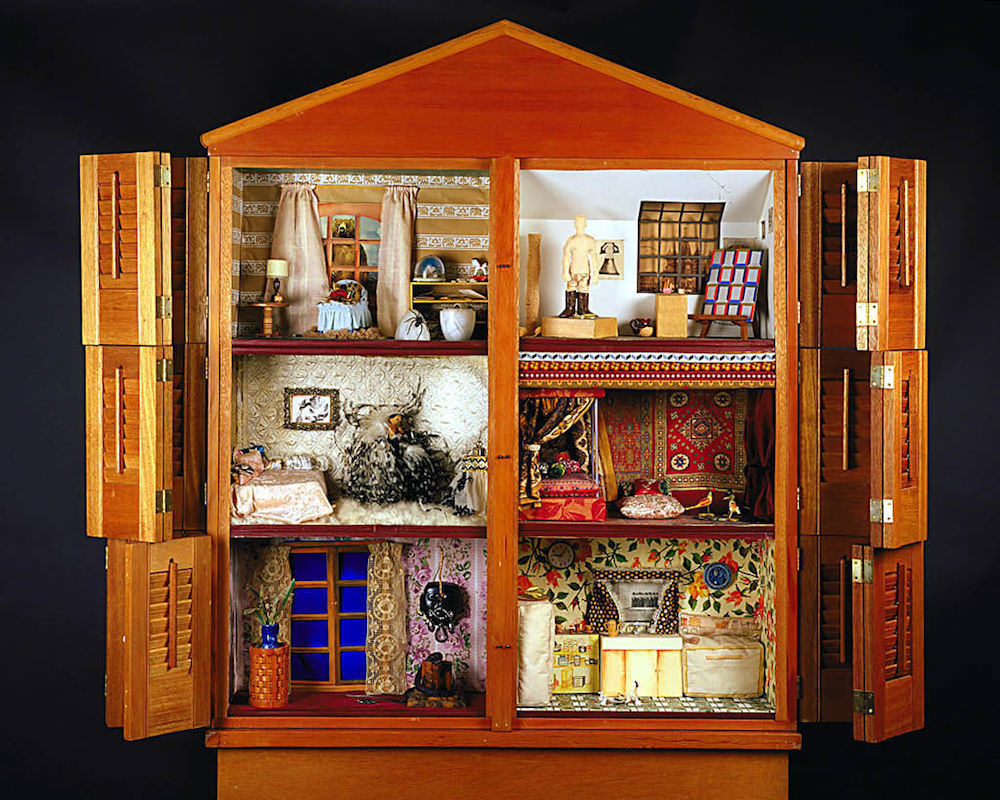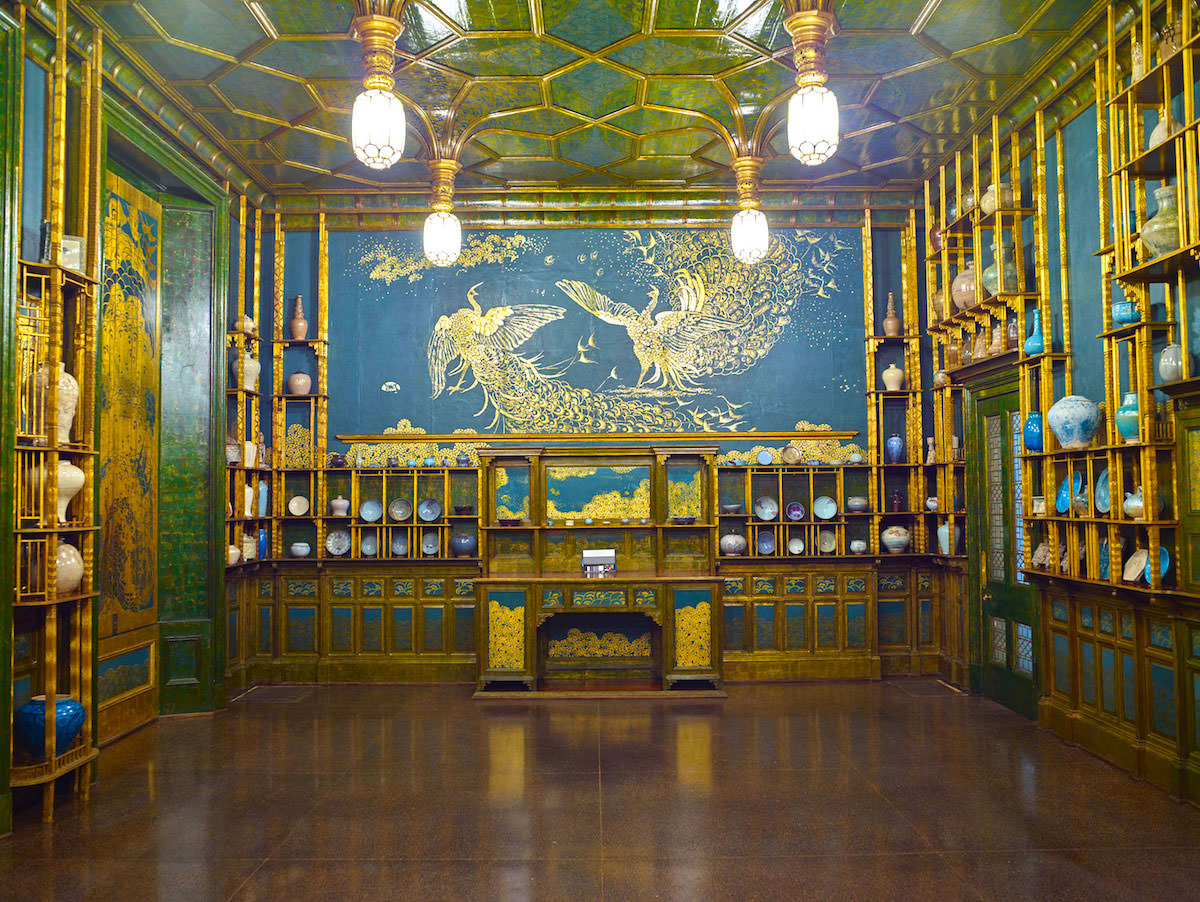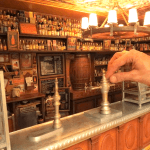The Aesthetic Movement
Art For Art Sake
The Aesthetic Movement flourished from 1860 to 1900. A reaction to the machine-made objects promoted in the Crystal Palace Exhibition of 1851, which allowed the masses to cheaply decorate their homes, designers of furniture and other household products went on a rampage to create beautiful pieces that would uplift the taste of the common man – and make some money in this growing market.
Fine artists followed, such as James Whistler and Dante Gabriel Rossetti. Playwrights and poets too; Oscar Wilde was a leading proponent; Théophile Gautier coined the phrase “art for art’s sake” which morphed into the “more flamboyant the better,” not only in art but daily life. Wilde planned on attending the Artist Ball, the social event of the season, and wanted to make a grand entrance and had his tailor cut a special suit. Oscar Wilde went as a cello.
Not all classical artists were enthusiastic about the Movement. One noted academician quipped, “Everyday I am challenged by the elegance of my teapot.”
One of the best examples of the Aesthetic Movement is not in a museum, but a New York City brownstone built in 1882 on the upper-eastside and owned by Michael and Margie Loeb. It glorifies a fundamental principle of the Movement: assemble works from different eras to create an artistic whole.
Margie Loeb explains. “We’re fascinated by nineteenth-century decorative arts,” says Margie, “and we were eager for the interiors to be true to the spirit of that era, but this is also our home, and it had to be a comfortable, practical place to live with our children.”
Their collecting interests eventually narrowed to focus on the American Aesthetic Movement, the avant-garde, furniture-as-art, British-born style popularized by the Philadelphia Centennial Exhibition of 1876.
“We are crazy about the Aesthetic Movement,” says Margie, and its premise “that everything should be beautiful. There was nothing that was not decorated to the fullest. I love its idea of harmoniously combining classical elements with the exotic contemporary cultures of the time from places like Japan.”
Click here for an article in the magazine “Incollect” and a gallery of gorgeous photos. Every room in this brownstone could be the model for a 1/12th scale roombox.
Speaking of Dollhouses
One would think dollhouse enthusiast would find this Movement a joy in which to work. But internet searches using various long-tail keywords involving for “aesthetic movement dollhouse era miniatures” provided skimpy results. The very best example was made by Miriam Shapiro, in collaboration with Sherry Brody. While the originators of the Movement shunned using their art to promote social or political change, Schapiro and Brody had no such qualms. Following is a reprint from a Smithsonian Exhibition pamphlet:
“Miriam Schapiro collaborated with Sherry Brody on Dollhouse as part of Womanhouse, an installation by a feminist art cooperative sponsored by the California Institute of the Arts. Womanhouse was a condemned Hollywood mansion transformed by the artists into a series of rooms dealing with different aspects of women’s experience, and Dollhouse provided another level of imagination and fantasy as a set of “rooms within rooms.”
“The compartments are filled with bits of lace, handkerchiefs, tea towels, miniature furniture, and personal mementos that Schapiro and Brody had collected from women all over the country. Dollhouse grew out of a series of works that Schapiro called her “shrines,” in which she explored her shifting identities as artist, wife, and mother. A parlor, a kitchen, a Hollywood star’s bedroom, a “harem” room, a nursery, and, on the top floor, an artist’s studio suggest these conflicting roles.
The different symbols challenge the idea that the domestic lives of women prevent them from making “serious” art. At the same time, the tiny rooms in Dollhouse evoke cells in which the hopes of women are often imprisoned. “
Click here to read an article about Miriam Shapiro’s work.
James Whistler’s Peacock Room
There are many wonderful stories about Whistler’s Peacock Room. Here’s one.
The shipping magnate Frederick Leyton, a very disagreeable man, had a famous interior designer build a dining room in his London mansion where he could also display his mostly blue and white Qing dynasty (1644-1911) porcelain collection. The designer became ill, and Whistler was brought in to finish the odd detail here and there.
When Leyton returned from a lengthy stay in the country, he found this magnificent room where the mundane shelving used to be. And a bill for 2,000 guineas (about $250,000 today), which Leyland refused to pay. An argument ensued with Whistler finally agreeing to settle for half the fee. He just had a few “touch-ups” to do.
After Leyland agreed to pay only half, Whistler did some more work on the room. He painted two more peacocks on the wall opposite The Princess from the Land of Porcelain.
The “touch-ups” were two peacocks on the end wall opposite the vivid portrait “The Princess from the Land of Porcelain. The birds face each other. The one to the left represents a starving artist, “with nary a bauble to his name.” On the right, we see the blowhard tycoon, “with more money than brains, flinging his treasure hither and yon,” the ground beneath the buffoon littered with silver shillings. Whistler titled the mural Art and Money.
Click here for the full story and many great pictures, one of which is a close-up of the peacocks.
The “Cult of Beauty” exhibit at the Victoria & Albert Museum in 2011 gathered much the work produced during the Aesthetic Movement. Click here to watch their beautiful video.
Susan Downing, with Patrick Owens
_________________________________________________________________________
I invite you to visit my Etsy Shop where I offer many accessories and pieces of furniture in 1:12 scale.








